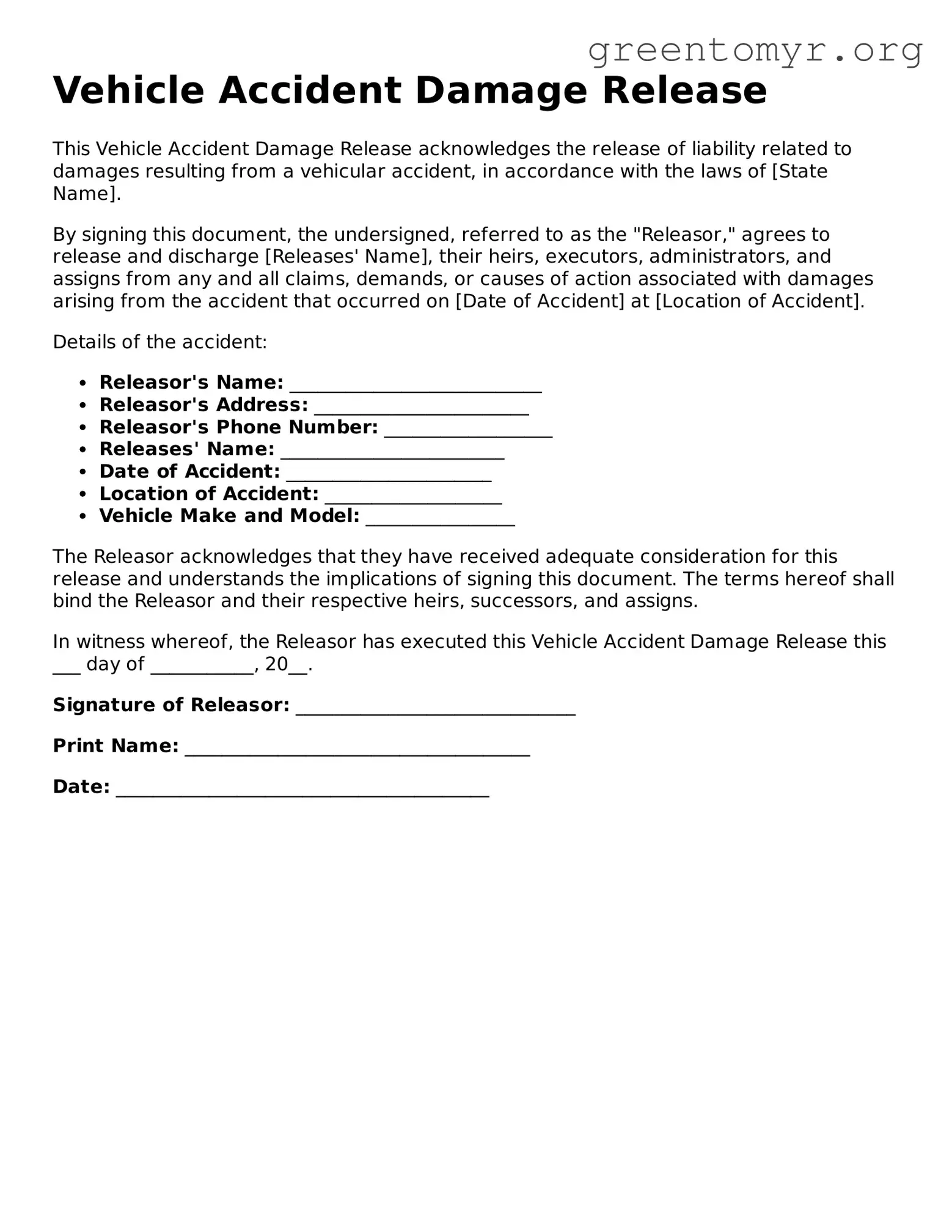Vehicle Accident Damage Release
This Vehicle Accident Damage Release acknowledges the release of liability related to damages resulting from a vehicular accident, in accordance with the laws of [State Name].
By signing this document, the undersigned, referred to as the "Releasor," agrees to release and discharge [Releases' Name], their heirs, executors, administrators, and assigns from any and all claims, demands, or causes of action associated with damages arising from the accident that occurred on [Date of Accident] at [Location of Accident].
Details of the accident:
- Releasor's Name: ___________________________
- Releasor's Address: _______________________
- Releasor's Phone Number: __________________
- Releases' Name: ________________________
- Date of Accident: ______________________
- Location of Accident: ___________________
- Vehicle Make and Model: ________________
The Releasor acknowledges that they have received adequate consideration for this release and understands the implications of signing this document. The terms hereof shall bind the Releasor and their respective heirs, successors, and assigns.
In witness whereof, the Releasor has executed this Vehicle Accident Damage Release this ___ day of ___________, 20__.
Signature of Releasor: ______________________________
Print Name: _____________________________________
Date: ________________________________________
